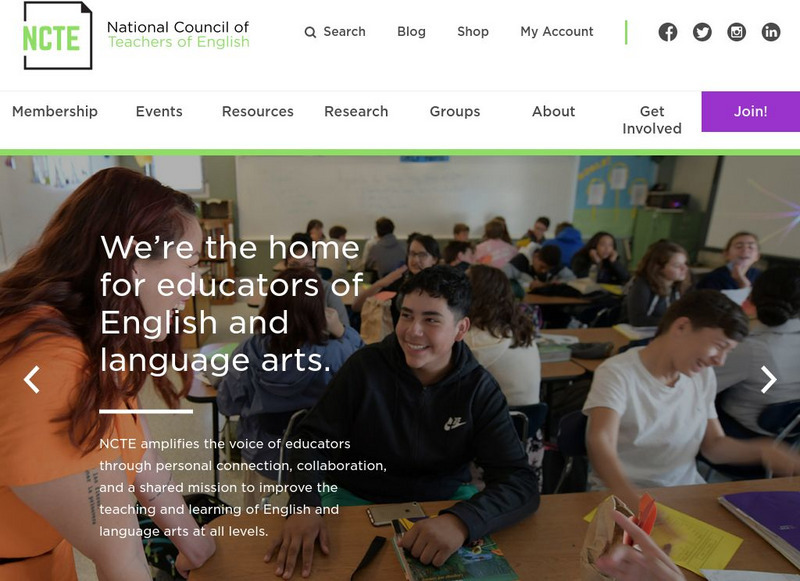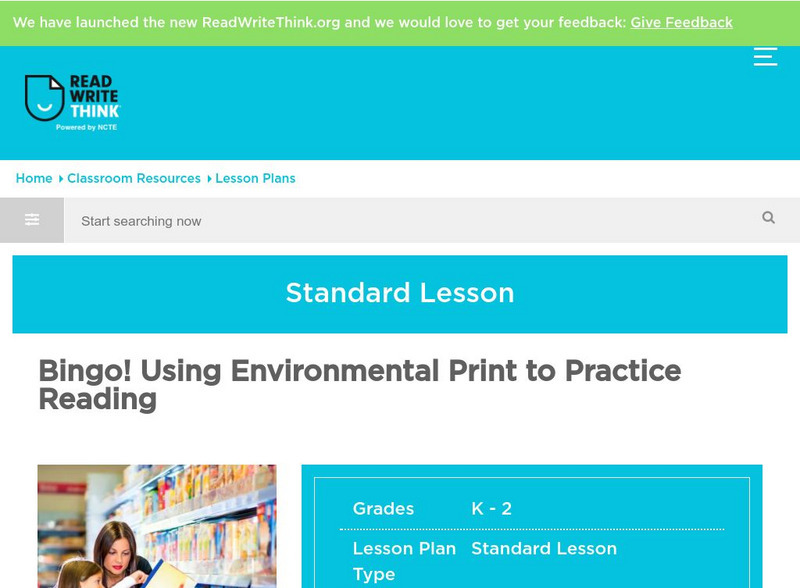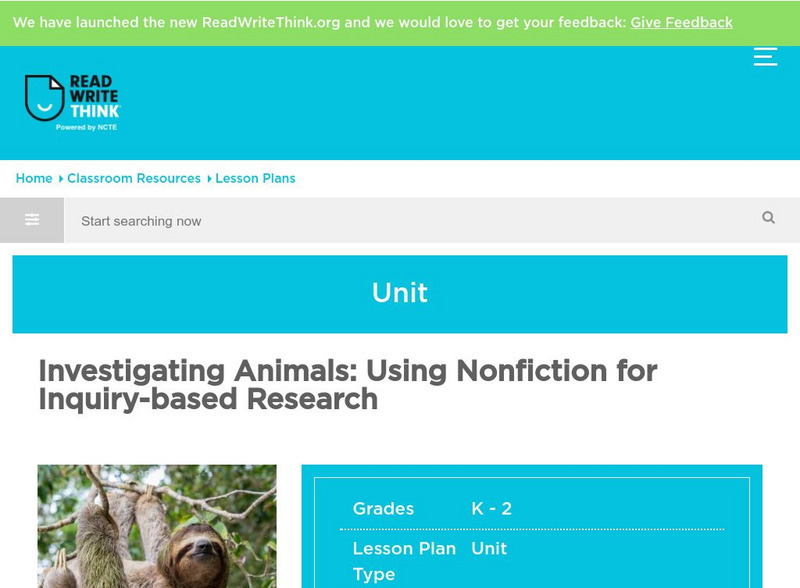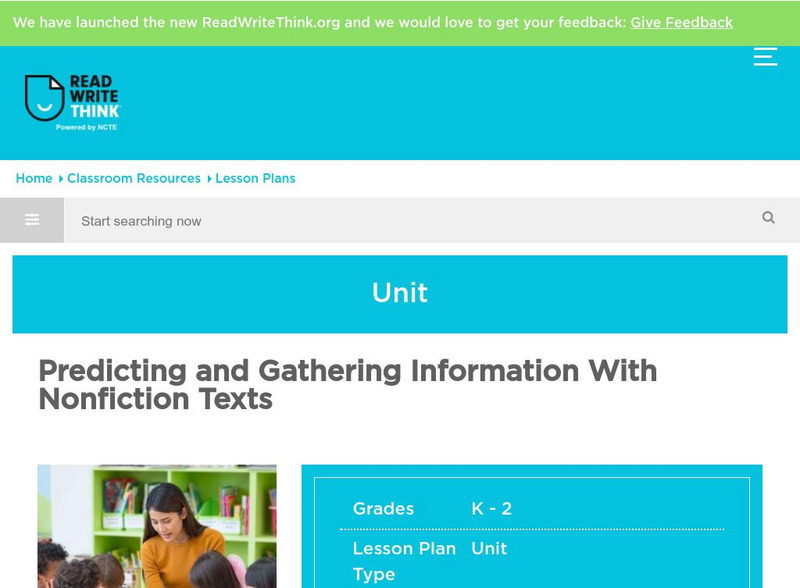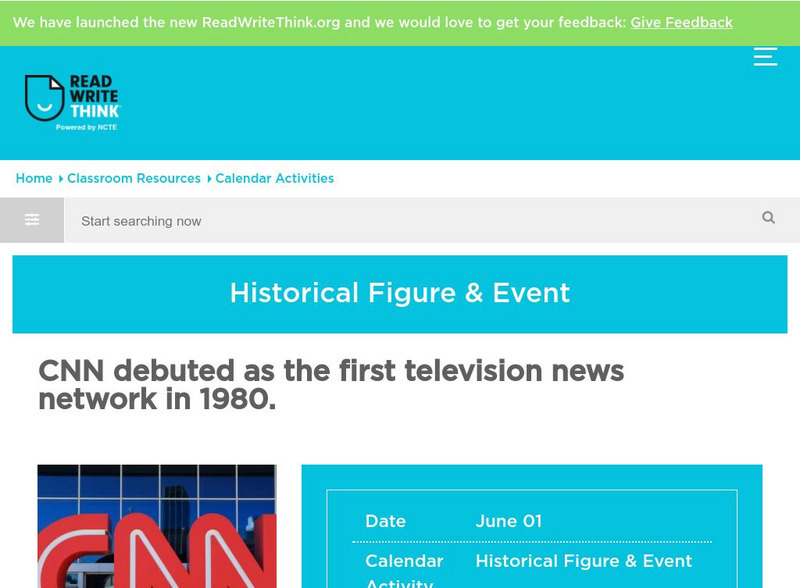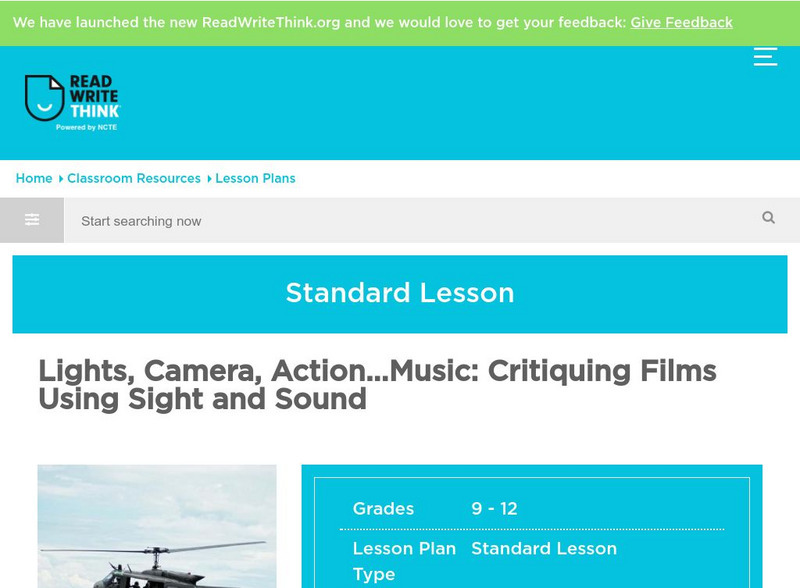ReadWriteThink
Read Write Think: Cooking Up Descriptive Language Designing Restaurant Menus
Contains plans for four lessons that ask students to develop their descriptive writing skills by creating their own restaurant menus. In addition to objectives and standards, this instructional plan contains links to sites used in the...
ReadWriteThink
Read Write Think: Writing Alternative Plots for Robert O'brien's Z for Zachariah
Lesson in which middle schoolers are required to write an alternative plot to O'Brien's science fiction novel. Includes an interactive graphic organizer, handouts, and a rubric.
ReadWriteThink
Read Write Think: Finding Figurative Language in the Phantom Tollbooth
Contains plans for four lessons that use The Phantom Tollbooth by Norton Juster to teach about figurative language. In addition to objectives and standards, this instructional plan contains links to handouts and to sites used in the...
ReadWriteThink
Read Write Think: Exploring Plagiarism, Copyright, and Paraphrasing
Contains plans for three lessons that deal with plagiarism, copyright law, and how to paraphrase correctly. In addition to objectives and standards, this instructional plan contains links to PDF handouts and sites used in the lessons as...
ReadWriteThink
Read Write Think: Researching Information: Comparing Electronic and Print Texts
This lesson allows students to compare and contrast print text structure with that of an online site. Students work together and use worksheets in comprehending the informational text. CCSS.ELA-Literacy.WHST.6-8.7 Conduct short research...
ReadWriteThink
Read Write Think: Introducing Each Other: Interviews, Memoirs, Photos, Internet
This lesson plan is designed to teach various methods students can use when researching background information on one another in order to introduce each other in written and oral form.
ReadWriteThink
Read Write Think: Shared Spelling Strategies
Contains plans for a lesson that will provide middle schoolers with strategies for spelling unfamiliar words. Students are asked to use phonological awareness and visual recall, analyze alternative spellings, and use a variety of...
ReadWriteThink
Read Write Think: Developing, Writing, and Evaluating Persuasive Speeches
Contains plans for four lessons that teach students how to make and present strong persuasive speeches. In addition to objectives and standards, this instructional plan contains links to sites used in the lessons as well as assessment...
ReadWriteThink
Read Write Think: Guided Comprehension: Summarizing
Lesson that introduces students to the comprehension technique of summarizing. Students learn using the QuIP (questions into paragraphs) method which involves organizing information and putting it in writing.
ReadWriteThink
Read Write Think: Buddies Create Power Point Stories
Contains plans for five lessons that ask students to create PowerPoint presentations about shared experiences like field trips or other activities. Students take pictures of what happen, and then explain the sequence of events in words...
Other
National Council of Teachers of English
The National Council of Teachers of English is devoted to improving the teaching and learning of English and the language arts at all levels of education. The NCTE provides a forum for the profession, an array of opportunities for...
ReadWriteThink
Read Write Think: Lesson Plan: Environmental Print
This lesson introduces students to the concept of reading through common items from the community. Through examining these items (environmental print), students will practice their reading skills and begin to see themselves as competent...
ReadWriteThink
Read Write Think: Exploring Character Through Images
This lesson plan explores Curious George in relation to images conveying character. Included in the lesson plan is an overview, practice, objectives, resources, preparation, and more.
ReadWriteThink
Read Write Think: Bingo! Using Environmental Print to Practice Reading
Contains plans for two lessons that teach environmental print to students using bingo games and matching cards. In addition to objectives and standards, this instructional plan contains links to sites used in the lessons as well as...
ReadWriteThink
Read Write Think: Sequence of Events Chart
A printable graphic organizer to help students sequence events and recognize cause and effect relationships within a story. Directions on how to use this graphic organizer as well as lists of teaching ideas and related resources are also...
ReadWriteThink
Read Write Think: Using Nonfiction for Inquiry Based Research
Contains plans for lessons that help young scholars explore the nonfiction genre by doing inquiry-based research on animals. In addition to objectives and standards, this instructional plan contains links to sites used in the lessons as...
ReadWriteThink
Read Write Think: Predicting and Gathering Information With Nonfiction Texts
Contains plans for eight short lessons that introduce nonfiction texts to second grade students. In addition to objectives and standards, this instructional plan contains links to sites used in the lessons as well as assessment and...
ReadWriteThink
Read Write Think: Authentic Writing and Math Problem Solving Using Shopping Lists
We're going shopping in this integrated lesson. Students must make a budget, create a shopping list, and act out grocery shopping utilizing their problem solving and writing skills. A comprehensive lesson with printable worksheets,...
ReadWriteThink
Read Write Think: National Public Radio Classroom Activity
Resource provides an activity/lesson for students in analyzing radio, in this instance, NPR. Provides lesson plans, web links, and a bibliography. From ReadWriteThink's annual calendar on May 3, 2007.
ReadWriteThink
Read Write Think: Cnn Debuted as the First Television News Network in 1980
These lesson plans relate to the gathering and production of news and creating a visual timeline. There are links to other lesson plan ideas, as well as web links, and a brief bibliography. SL.11-12.2 Eval&Integrate sources
ReadWriteThink
Read Write Think: Critiquing Films Using Sight and Sound
This lesson plan examines methods of critiquing and review films based on elements of sight and sound. Included in the lesson plan is an overview, practice, objectives, resources, preparation, and more.
ReadWriteThink
Read Write Think: Designing Effective Poster Presentations
Contains plans for six or seven lessons that teach students to create and present effective poster presentations. In addition to objectives and standards, this instructional plan contains links to PDF handouts and sites used in the...
ReadWriteThink
Read Write Think: Searching Informational Texts
Online lesson allows elementary students to use prior knowledge, make predictions, and perform research on the Internet. Labeled "The Frog Beyond the Fairy Tale Character," lesson challenges students to examine print and online texts...
ReadWriteThink
Read Write Think: Acquiring New Vocabulary
This lesson teaches elementary students new vocabulary terms through book discussion groups. Students use context clues, prior knowledge, and print and online resources for vocabulary understanding in their discussion.












